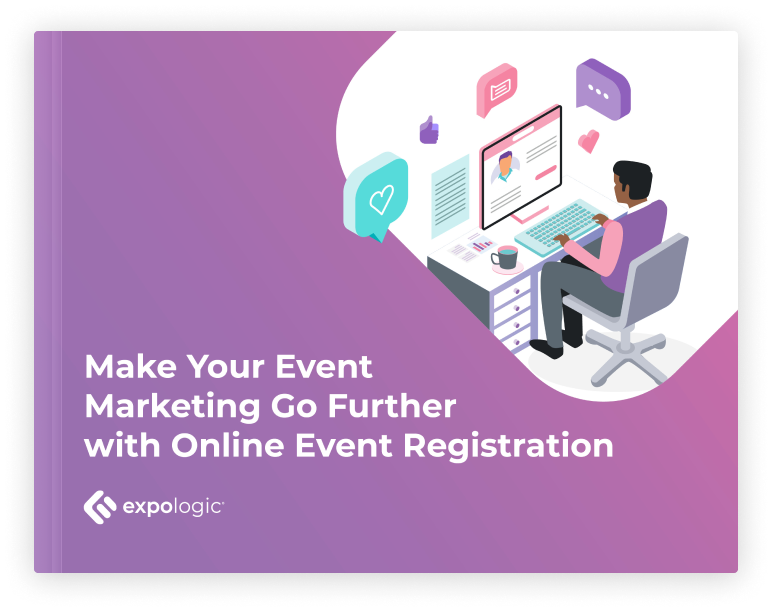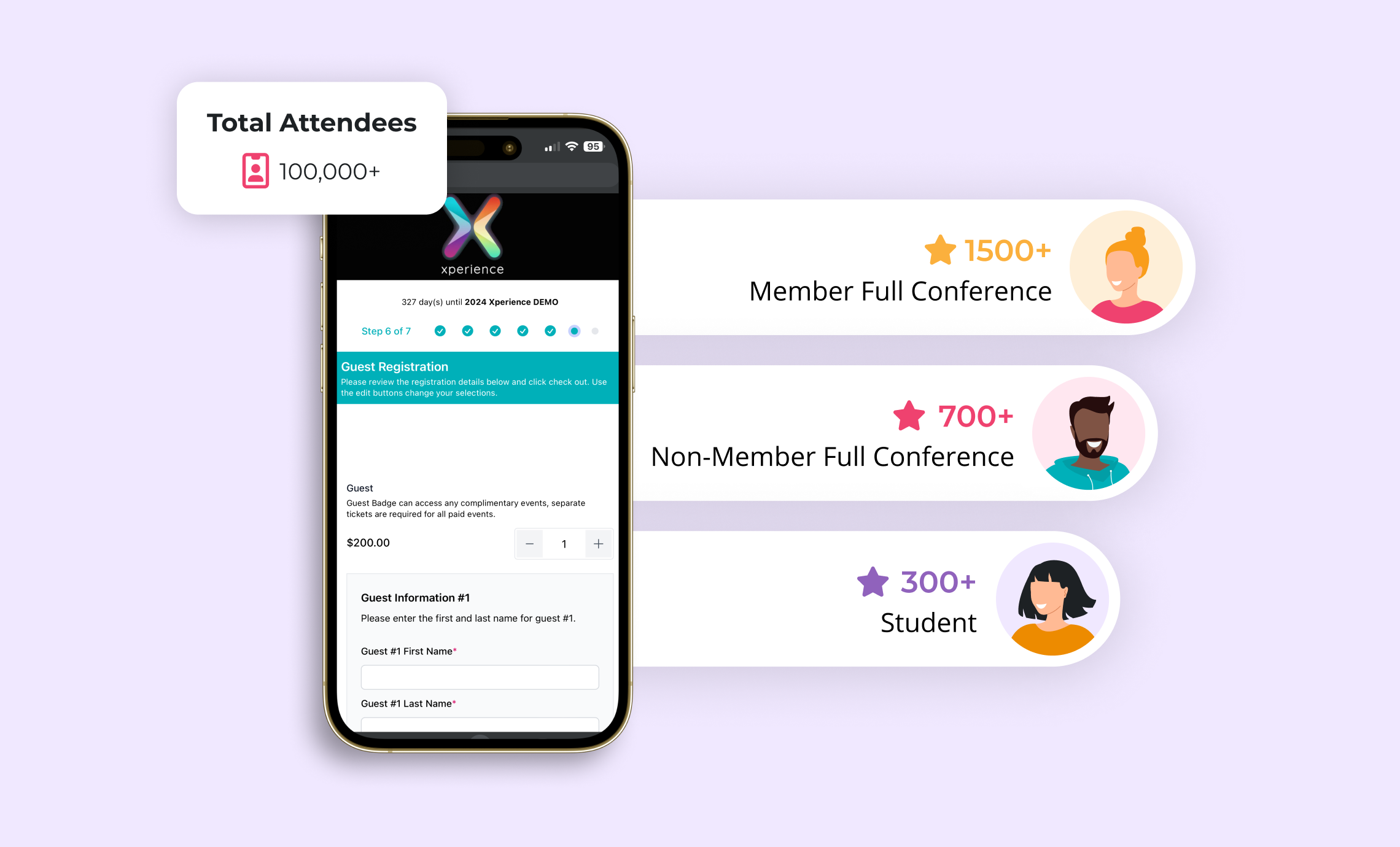It’s common knowledge that event planning takes much patience, precision, and attention to detail. Event organizers and planners know that getting people to show up is one of the most crucial parts of their job. And yet, event registration mistakes are all too common.
Registration is the first step attendees take in committing to an event. Without proper registration, an event will either be under-attended or over-attended, leading to overall dissatisfaction. Registration provides a clue on how to plan for a successful event. To ensure your event goes off without a hitch, here are the 10 most common event registration mistakes and how to avoid them:
1. Event details aren’t clear
If a person isn’t sure what they’re signing up for, they won’t commit. This idea also applies to your event registration, whether online or in person. Registrants will want to know as much necessary information as possible about your event to decide whether it’s worth their time and money.
The essential details include the what, where, when, and why. Registrants need to know whether they’ll be available on the given date and time, if your event is in an area they can quickly get to, or why they need to attend. If any of this information is missing, it could lead to low attendance.
Moreover, if you fail to list event fees or provide an unclear description, attendees may assume costs and other details that don’t exist. Either way, they’re likely to become frustrated and drop out.
To avoid this, always provide accurate, precise information. Clarity will lead to much higher registration numbers, and attendees will know what exactly to expect when they arrive. Include anything you need your registrants to know in the registration form. Apart from the basic details, share any pertinent point that plays a significant role in your event so everyone knows what they’re signing up for at your event.
Event details should be as straightforward as possible, with descriptions, fees, and deadlines stated clearly on the registration page. As an event planner, put yourself in the shoes of your potential registrants and think about what information they’d need to sign up.
2. Registration has too many steps
No matter how much your event means to you, never assume that someone will be willing to exert much time and effort to register. Registrations that ask for too much from registrants can be a huge put-off. For example, requiring registrants to create a username and password, connect their social media accounts, fill out lengthy forms, or go through payment pages with multiple steps can be tedious.
When registering, a person’s goal is to let you know they’re coming to your event. You’re asking for their time, so why make it difficult for them? If they need to jump through hoops just to let you know that they’re saying yes to your invitation, chances are they will give up before completing the process.
The less demanding the registration process is, the more people it will attract. To make registration easier, use a platform that offers user-friendly steps and keeps the process straightforward. Most importantly, keep the number of steps to a minimum.
Instead of asking registrants to create usernames, allow them to use email addresses instead. Asking them to connect their social media accounts may also be too much, so it’s best to keep it optional. Some registrations also require buyers to go through some back-and-forth steps regarding payment. Avoid this by using a platform that offers integrated payment options.
Your goal is to make registration easy and accessible to everyone, so remove steps that could deter people from registering. Make it easy for them to say yes!
3. Registration forms are too long
Apart from demanding registration processes, another nightmare for registrants is registration forms that need to be shorter. Most people don’t want to spend more than a few minutes filling out forms, and asking pages of questions can be a turn-off. Too many fields can seem overwhelming, and the longer it takes to register, the more likely people will give up.
Event organizers can have several reasons for having registration forms that should be shorter. For instance, collecting demographic information can develop a complete profile of participants for evaluation purposes, or gathering data about attendees’ interests can help to better tailor their next event.
These are helpful, but only for you. Most registrants are reluctant to give out such information and may abandon the registration process if they find it too intrusive or time-consuming. Answering questions requires time and effort, and the more questions an organizer asks, the higher the chance that the registrants will walk away.
The best way to ensure that your registration form remains short is to only ask for the necessary information. You can get away with only asking for a few pieces of primary data, such as name, email address, and payment information. You can include a few additional questions if they’re optional. And, if you need the data for evaluation, collect it after the event.
Registration forms should be short enough to keep people interested but long enough to gather the necessary information. The quicker the form, the easier and faster it will be for attendees to complete.
4. The site doesn’t feel secure
Everyone has heard about the threats of identity theft, data breaches, and other malicious activities that can happen when sensitive information is not securely stored. The internet is full of scam sites, and people are wary of sharing their data.To not encounter these event registration mistakes, most event registration forms require some payment method or contact details, which can be challenging to collect, especially if you don’t put effort into gaining people’s trust.
Of course, asking for personal information if you need it is not wrong. It allows you to register guests properly and verify their identity. Payment details also enable you to secure payments from event attendees. Most people understand this, but if you don’t guarantee them any security measures, why would they trust you and your registration forms?
Your registrants know the possibilities of data breaches and identity theft, so be transparent with your security measures. Encourage trust and reduce potential fraud by complying with all relevant data protection and privacy laws. Most registration software providers provide encryption for data security and PCI compliance, which adds another layer of trust for your participants.
Show your registrants that your event is trustworthy. You will attract more registrations when you put more effort into letting them know that you value their trust and privacy. Most people are willing to give out their information if they know it’s safe, and that’s a key message you should be sending out. Let them know and feel that you’re professional, organized, and honest.
5. What about the UX?
All is well as long as attendees can fill out the registration form. Input names, contact details, and other information, and then you’re good to go. One common event planning mistake is overlooking the user experience (UX). If the UX isn’t good enough, registrants may be less likely to complete the registration process.
UX is in the details. It’s in the overall design, the colors you use, how quickly it loads, and how intuitive it is. It’s also in the protected password fields, radio buttons, labels, and error messages. UX is crucial for the success of your event registration!
UX in registration means you care about your registrant’s experience. You want to ensure that it’s as easy and pleasant for them as possible, so they can quickly and easily complete the registration process. If they feel like you don’t care about their experience, they may be less likely to complete the registration or come back in the future.
High-converting registration forms are consistent with branding. Let your registrants know, and remember they’re signing up for your event. Additionally, make your registration form optimized for mobile and desktop use so people can fill it out on their preferred devices.
Make your registration forms visually appealing with minimal text. Create a sleek, consistent design that matches the look and feel of other elements of your event. Aim for an easy-to-navigate structure and focus even on the littlest details like the button spacing, fonts and colors, and size of fields.
6. Registration asks for too much personal information
Events open to the public usually only need basic contact information to complete the registration process. Regardless of how secure or trusted your platform might be, you’re likely to get fewer registrations if registrants are unwilling to provide personal information.
Some personal information can be necessary, such as an email address for confirmation or contact information in case of any changes. Other events also ask for a mailing address or phone number, depending on the type of event. However, you should avoid these event registration mistakes for public events by asking for only necessary personal information.
Sharing anything online is always a risk; your event attendees should not feel like they’re giving away too much personal information. Limit the personal information you ask for and ensure you handle any collected data securely. The best practice is asking only for the information to help your event run smoothly.
Make personal information optional so you can still collect the information you need without scaring away potential attendees. If you really need to gather more personal information, include a note explaining why and make sure to respect the privacy of your attendees.
Explaining why you need certain information and how you will use it can help guarantee your registrants that their information is safe with you. While creating a secure process for your event is essential, it should also be as user-friendly as possible. People want to feel they can trust you with their personal data, so don’t ask for more than is necessary.
7. Attendee confirmation is uncertain
After spending time and giving away personal information to register for your event, the least you can give to assure the attendee further is any kind of confirmation. Most people don’t take the time to double-check their registration, so make sure you have a confirmation process in place. The last thing you want as an event planner is for attendees to arrive, not find their names on the list, and then leave.
Without confirmation, registrants can also feel lost about their registration. They will want to be 100% sure that their registration was successful and that they actually reserved a slot for your event. Some want to know what to expect next, so leaving them hanging in confusion can be a surefire way to lose attendees.
A confirmation page after they finish registering is the quickest way to provide reassurance that their registration has gone through. Besides a confirmation page, send out automated email confirmations so registrants may see proof of registration in their inboxes. You may also include their answers to registration questions so they can see if there are any mistakes or typos in the information they provided.
Asking registrants where they’d prefer to receive their confirmation also allows you to tailor your process to the type of event you are hosting. Some prefer email confirmations, but some may want a text message. Most importantly, make sure your confirmation process is user-friendly and gives registrants the assurance they need. Confirmations are also an effort to gain people’s trust!
8. Forms have no cut-off date
It’s great that your registration form is live, and you can collect information 24/7. However, to avoid these event registration mistakes, you need to set a cut-off date to know when the registration has actually ended. Not having a cut-off date means you’re allowing registrants to sign up indefinitely, which can lead to problems with budgeting and capacity.
A cut-off date is advantageous because it allows you to plan better and be in control of your event. For example, if you know exactly how many people will be attending a week before your event day, you can plan accordingly by purchasing enough food and drinks for the event. You should also consider the size of your venue when setting your cut-off date.
If you don’t want to close the registration abruptly, consider having early bird and regular pricing tiers. These advantages will put a definitive date on your registration timeline and help you plan more effectively.
Most event planners set up a registration period and specify when it ends so attendees know how long they have to register. Some sense of urgency can help encourage people to sign up. If they know they don’t have forever to make up their mind, they will be more likely to act.
Setting up a registration deadline ensures that no one shows up after the event has already started. A cut-off date is a boundary, helping you keep track of the number of people attending and ensuring that everyone is accounted for. State your cut-off date clearly on your event page and in any communications.
9. Forms are too general
If there are registration forms that are too long, there are also those that are too general. Every registrant is unique, and your registration form should reflect this by providing enough information on the attendees. To avoid these event registration mistakes, it’ll also depend on your event, but it’s best to ask specific questions like what topics they’d like to learn about, previous experience in the field, and so on.
Some events will need to include questions related to age, gender, occupation, and more. Don’t make the mistake of assuming that all attendees are the same. Consider different preferences, such as dietary restrictions (if you plan to serve food) and seating requirements. If transportation is necessary and a part of your services, ask for details such as the pickup location and preferred mode of transportation.
In other words, create your registration form to fit your audience. All of this will help you tailor the event experience for each attendee. Too much or too little can lead to a poor experience. By giving attendees the flexibility to choose their preferences, you’re more likely to keep them interested in your event. It shows that you’re attentive to their needs and wants. Simple details like this can go a long way in building an enjoyable experience for your attendees.
Another related mistake to avoid is having ambiguous form fields. You’ll likely receive incomplete responses if you leave any room for interpretation. To ensure that your form fields are straightforward and detailed enough, test them on a few people before you launch.
10. No real-time update
You might think that the challenge only lies in the details, design, and questions on your registration form. Avoid this event registration mistake by adding the importance of keeping track of any updates that may happen during the process. How many seats are still available? Which events have sold out? Real-time updates are another way of not leaving your registrants in the dark.
If you have limited slots, update the registration page regularly so your registrants know their chances of attending the event. It’d be discouraging if they find out it’s sold out after they’ve filled in the form. If your event also allows seat selection, ensure they can see if their preferred seat is still available.
To avoid confusion and keep your registrants in the loop, have a layer of automation on your registration page. It’d be helpful for anyone who visits to see the most updated information while signing up. You can also use this as an opportunity to remind your registrants why they should attend your event.
You can make better decisions regarding capacity planning and adjustments with real-time updates. For example, when you detect that the registrations are climbing rapidly, you know it’s time to make room for more seats. Moreover, you can also use this as a chance to reach out to more registrants and encourage them to take action before it’s too late.
Most online event registration systems offer automated updates. Consider investing in software that can provide real-time visibility. Doing so will help you optimize your event registration process.



